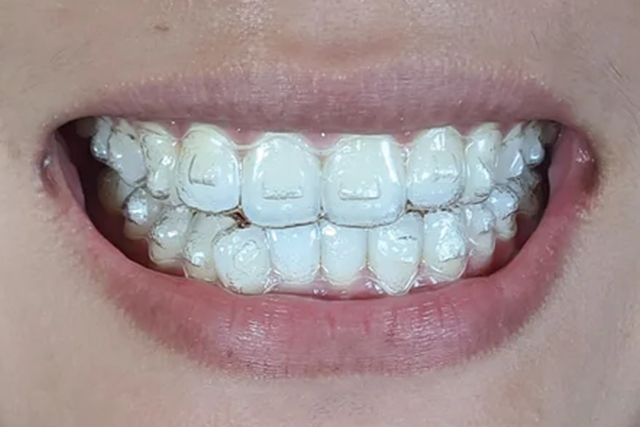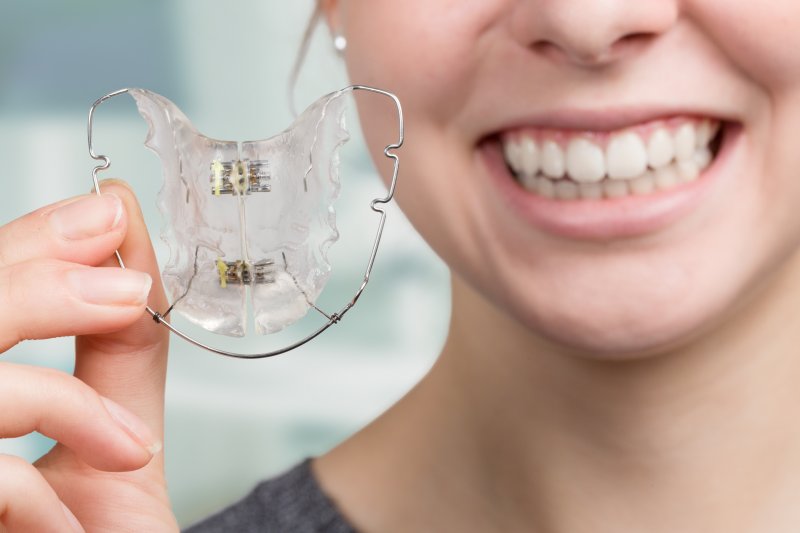Success Stories: How Invisalign Changed Lives and Enhanced Confidence
Success Stories: How Invisalign Changed Lives and Enhanced Confidence
Blog Article
Invisalign vs. Typical Braces: Which Choice Is Right for You?
When taking into consideration orthodontic treatment, the choice in between Invisalign and traditional dental braces offers a number of vital elements that warrant careful examination. Invisalign offers a discreet choice with detachable aligners, while traditional dental braces provide a more noticeable yet effective remedy for severe imbalance. Each alternative includes distinctive benefits and disadvantages connected to looks, convenience, therapy period, and price. Understanding these subtleties is crucial for making an informed choice that straightens with your individual preferences and way of life. The question stays: which choice will ideal satisfy your orthodontic demands and expectations?
Summary of Treatment Options

On the other hand, traditional braces contain steel brackets and cables that are adhered to the teeth. This method applies continual pressure over time to accomplish placement. While effective for complicated orthodontic concerns, traditional braces call for routine visits for modifications and can posture challenges in preserving dental hygiene because of the trouble of cleaning around braces and cords.
Both options have their values, and the choice commonly rests on details dental conditions, way of life preferences, and client conformity. Inevitably, speaking with an orthodontic expert is critical for establishing one of the most ideal therapy strategy customized to specific demands. Recognizing the nuances of each option can considerably affect the general success of orthodontic therapy.
Aesthetic Factors To Consider
A considerable aspect affecting the selection in between Invisalign and conventional braces is the visual appeal each therapy uses. Invisalign aligners are crafted from clear plastic, making them essentially unseen when put on.
In contrast, conventional braces include steel brackets and cords, which can be a lot more visible. While advancements in orthodontic modern technology have actually caused the development of smaller sized brackets and tinted elastics, traditional dental braces still preserve a more conspicuous profile. For some people, the visibility of dental braces may prevent them from seeking necessary treatment.
Inevitably, the option in between Invisalign and conventional dental braces may rest on personal choices regarding aesthetic appeals. Patients who focus on discretion often lean towards Invisalign, while those that are less concerned concerning visibility might choose standard dental braces. Understanding the aesthetic effects of each alternative is important for making an informed choice that straightens with one's lifestyle and preferences.
Convenience and Convenience

In regards to convenience, Invisalign aligners are removable, enabling people to appreciate their preferred foods without restriction and maintain optimum dental hygiene. Cleaning and read this flossing are streamlined, as the aligners can be gotten during these regimens, whereas typical dental braces need careful steering around braces and wires.
In contrast, typical braces require routine adjustments, making them less hassle-free for those with busy timetables. In general, the convenience and convenience of Invisalign make it an enticing choice for several individuals looking for orthodontic treatment.
Therapy Duration and Efficiency
While both Invisalign and typical dental braces work in dealing with dental imbalances, the period of treatment can vary considerably in between the two options. Normally, Invisalign treatment can take anywhere from 12 to 18 months, depending on the complexity of the case. The clear aligners work by progressively changing teeth into their desired settings, and routine follow-ups with an orthodontist aid make certain progress remains on the right track.
In comparison, traditional braces commonly call for a longer dedication, usually ranging from 18 months to three years. This results from their fixed nature and using cables and brackets, which can be much more efficient for complicated situations and extreme imbalances (Invisalign). The treatment performance of typical braces is well-documented, as they permit specific adjustments and better control over tooth movement
Ultimately, the choice between Invisalign and traditional braces might rest on both the awaited therapy period and the specific oral issues at hand. Consulting with an orthodontist is essential, as they can supply customized suggestions based upon specific demands, guaranteeing the selected technique straightens with desired timeframes and outcomes.
Cost Comparison and Insurance Choices
Cost plays a considerable investigate this site function in the decision-making procedure for individuals considering orthodontic treatment, whether selecting Invisalign or conventional dental braces. Usually, the cost of Invisalign ranges from $3,000 to $8,000, while traditional braces usually cost in between $2,000 and $6,000. Aspects influencing these prices consist of the intricacy of the case, the duration of therapy, and geographical place.
Many dental insurance coverage plans provide partial protection for orthodontic therapies, but the specifics can vary extensively. Generally, conventional dental braces may be extra often covered by insurance policy plans contrasted to Invisalign, which some insurance companies categorize as a cosmetic treatment.
Additionally, numerous orthodontic practices offer adaptable layaway plan, making both therapy alternatives extra accessible. Clients ought to ask about possible funding choices and discounts for upfront settlements. Examining the overall price, including insurance policy benefits and layaway plan, is necessary for making an educated choice that lines up with both visual choices and budget considerations.

Final Thought
In recap, the selection in between Invisalign and traditional braces depends upon several variables, consisting of visual choices, comfort, treatment duration, and cost. Invisalign offers a discreet, detachable alternative that promotes dental health and nutritional versatility, while standard braces may be more suitable for complicated dental problems and commonly come with a reduced cost point. Eventually, examination with an orthodontist is crucial to analyze individual circumstances and establish one of the most ideal therapy choice for accomplishing optimal oral placement.
When taking into consideration orthodontic therapy, the option in between Invisalign and standard dental braces offers numerous vital factors that warrant careful evaluation.Contrasting Invisalign and standard braces reveals distinct treatment alternatives for orthodontic adjustment.While both Invisalign and typical dental braces are reliable in correcting dental imbalances, the duration of treatment can differ substantially in between the 2 alternatives.Expense plays a substantial function in the decision-making process for people taking into consideration orthodontic therapy, whether opting for Invisalign or conventional dental braces.In recap, the option in between Invisalign and standard braces hinges on multiple factors, including visual preferences, convenience, therapy period, and cost.
Report this page